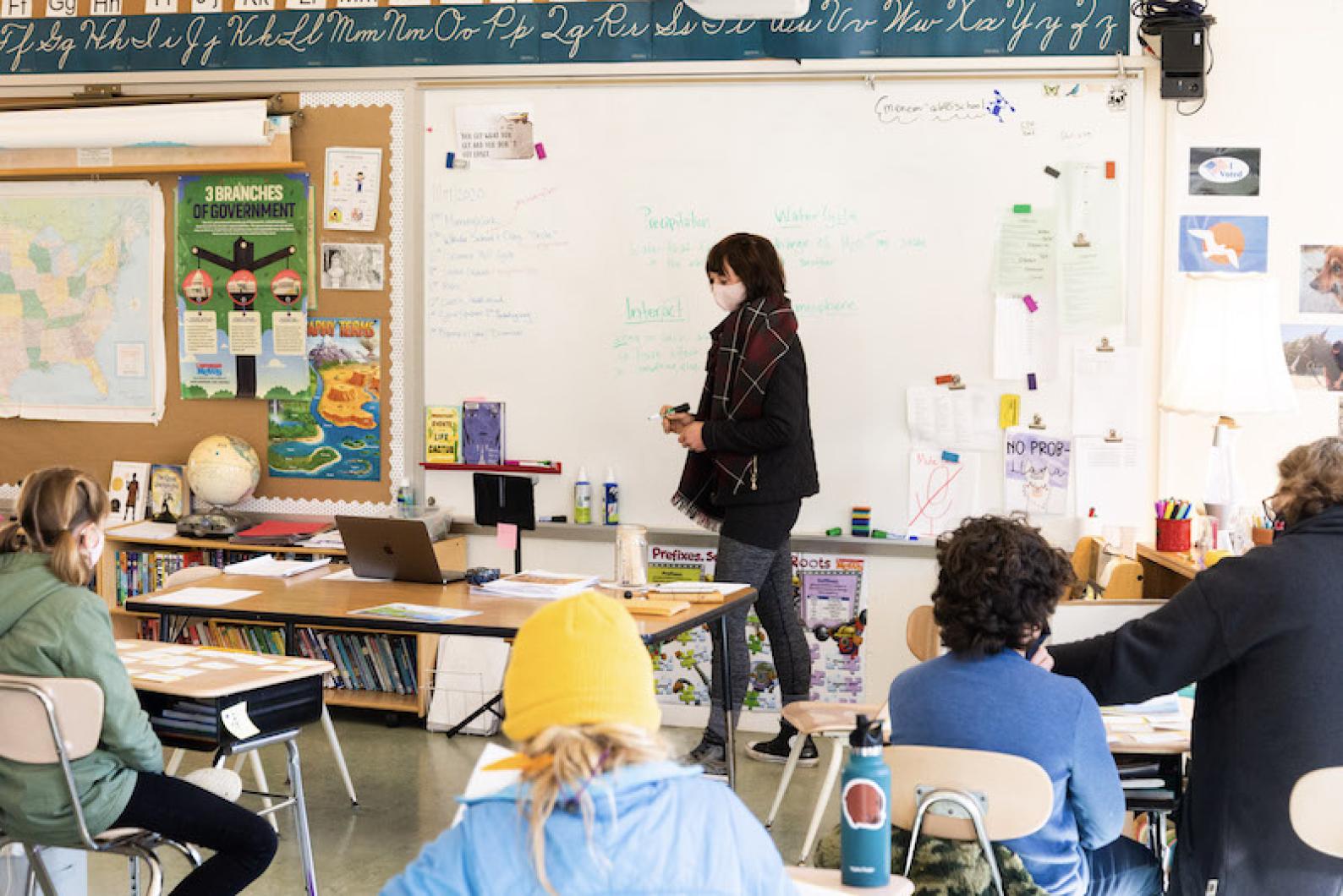After months of planning and debate, comprehensive coronavirus testing is due to begin this week in Martha’s Vineyard public schools.
Schools will regularly screen all students and staff, using a batch-testing approach. Testing will be mandatory for anyone entering school buildings.
The testing program has been in the works since fall and recently cleared the last hurdles with two grants: $100,000 from the Martha’s Vineyard Savings Bank charitable foundation, and $212,150 from the Island nonprofit MVYouth.
The total cost of the program is $462,500; schools will also contribute $150,000, apportioned by enrollment.
Modeled on a program used in the Wellesley public schools, the testing program was designed by a school-appointed task force with guidance from Dr. Ben Miller, an off-Island epidemiologist.
The program will use a form of asymptomatic testing called surveillance testing that aims to prevent outbreaks by regularly screening the school population. Test kits will use saliva-based PCR tests produced by Mirimus Clinical Labs.
At a recent MVYouth ceremony, Molly Houghton was named as the program coordinator who will oversee daily operations for the program, including collecting and distributing test kits and coordinating school-specific testing schedules.
A 2016 graduate of the Martha’s Vineyard Regional High School, Ms. Houghton graduated from the University of North Carolina at Wilmington in May with a degree in public health. Since early summer, she has been working at Test MV, the free coronavirus testing site at the high school that to date has tested thousands of asymptomatic patients for the virus.
As program coordinator, Ms. Houghton will also work on community outreach, focusing specifically on the large non-English speaking population in the public schools.
The testing plan has seen many iterations since its initial proposal.
According to the most recent draft, a selection of 900 students and staff across the school system will be tested each week in batches, or pools, of 24. High-exposure groups, such as high school winter athletes, will be tested weekly, Ms. Houghton said.
“We worked closely with an epidemiologist who was able to make a plan that sort of broke down all of the numbers and laid out what the best spread of those 900 tests would be for the community,” Ms Houghton said. “It’s a random selection because it’s a better picture if it’s more random,” she added.
Tests will be self-administered at home and delivered to school buildings on Thursdays for results over the weekend. Details of test kit distribution and collection will be determined on a school-by-school basis, Ms. Houghton said.
“We’re working with the nurses and administration at each of the schools to find a plan that’s going to best suit their schedules and their students and families,” she said.
Ms. Houghton said she is also enlisting community volunteers to help with small tasks, such as distributing tests.
The program was scheduled to get under way on Monday, the first school day of the new year, with comprehensive screening for all faculty in the school system. Regular testing is due to begin Jan. 11, and run through the end of the school year.
All Island schools except the high school are on hybrid learning plans. The high school has been all remote except for students with high needs, but plans to transition to hybrid learning this month.
Alex Salop a school committee member who has been active in the testing program, called the testing an important step forward for the schools.
“In a perfect world, we might get towards April, May and June and be in a situation where perhaps we can back off some of our testing, but we aren’t planning on that,” he said. “Testing methods are evolving incredibly rapidly — even what we’re doing now was not available three months ago. Many of the parameters that we’re going by right now could change.”







Comments (3)
Comments
Comment policy »